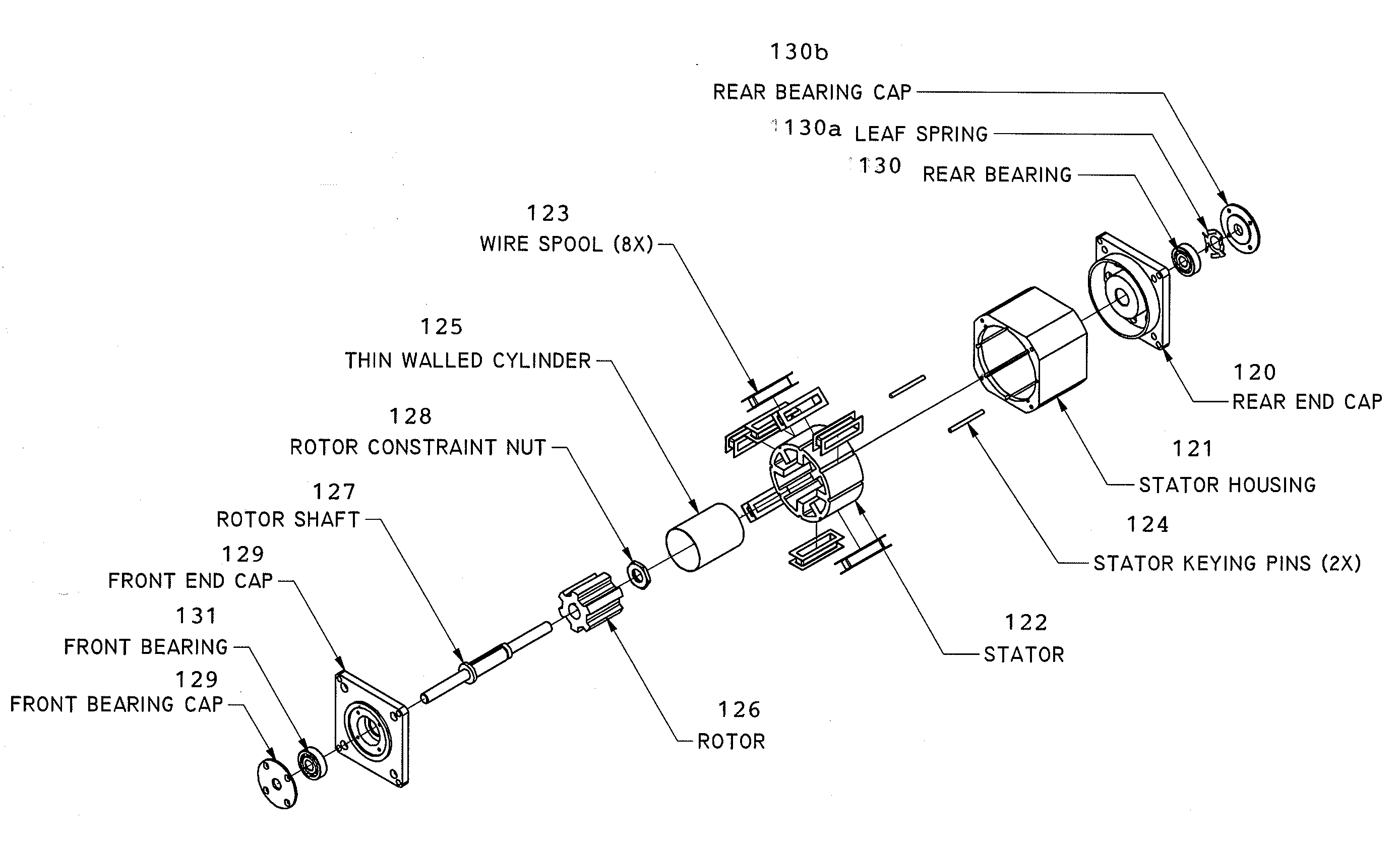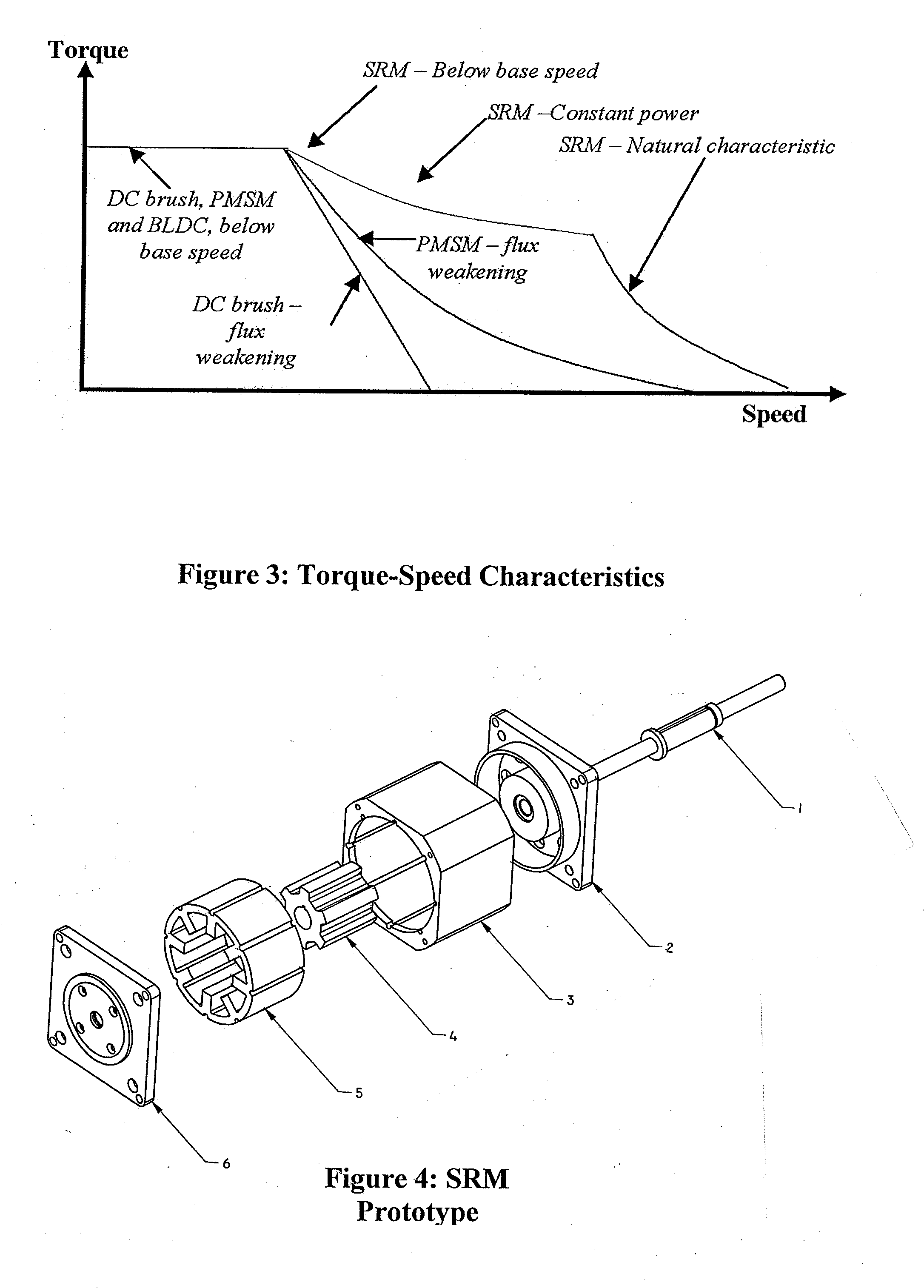Motor for high temperature applications
a high-temperature application, motor technology, applied in the direction of synchronous motors, magnetised circuits, windings, etc., can solve the problem that most existing motors and actuators are not designed to survive in harsh high-temperature environments
- Summary
- Abstract
- Description
- Claims
- Application Information
AI Technical Summary
Benefits of technology
Problems solved by technology
Method used
Image
Examples
Embodiment Construction
[0026]In the following detailed description of the invention, certain preferred embodiments are illustrated providing certain specific details of their implementation. However, it will be recognized by one skilled in the art that many other variations and modifications may be made given the disclosed principles of the invention.
[0027]In a preferred embodiment, a switched reluctance motor (SRM) of doubly-salient, singly-excited type is used, with salient poles on both the rotor and stator, but only the stator carries windings, as shown in FIG. 1. The rotor has no windings, magnets, or cage winding. Both the rotor and the stator are built up from a stack of magnetic-alloy, salient-pole laminations. The purpose of the stacked laminations is to reduce eddy current losses during operation. The SRM employs electronic commutation, for which the magnetic field is stepped through the poles physically by sending current pulse sequences to the coils, so that the rotor follows this field. The o...
PUM
 Login to View More
Login to View More Abstract
Description
Claims
Application Information
 Login to View More
Login to View More - R&D
- Intellectual Property
- Life Sciences
- Materials
- Tech Scout
- Unparalleled Data Quality
- Higher Quality Content
- 60% Fewer Hallucinations
Browse by: Latest US Patents, China's latest patents, Technical Efficacy Thesaurus, Application Domain, Technology Topic, Popular Technical Reports.
© 2025 PatSnap. All rights reserved.Legal|Privacy policy|Modern Slavery Act Transparency Statement|Sitemap|About US| Contact US: help@patsnap.com



